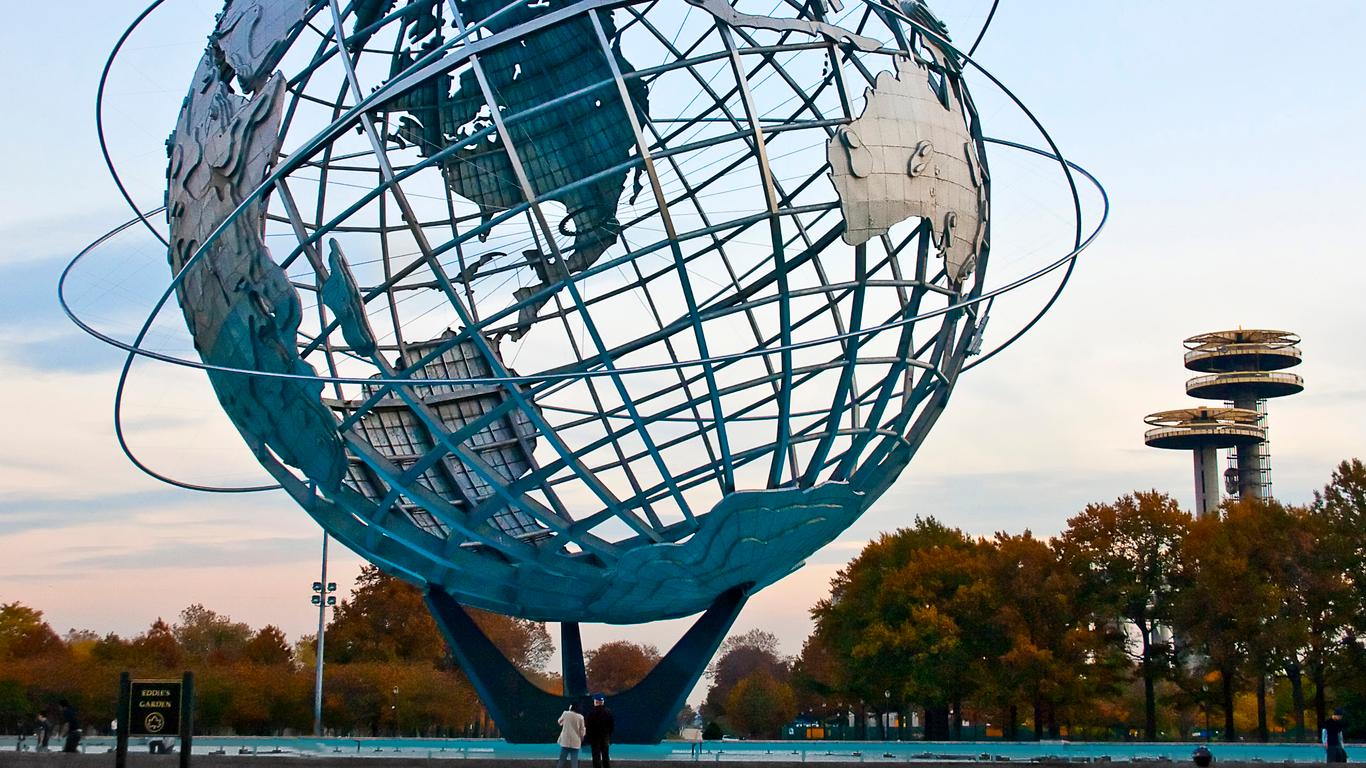While most of Flushing in Queens is a richly diverse residential neighbourhood, the area’s downtown is one of New York’s largest commercial and retail areas. It is also home to much of the early New York colony’s history.
Flushing is largely off the tourist trail but houses a number of New York landmarks. The Flushing Town Hall is affiliated with Washington D.C.’s Smithsonian Institution and plays host to a cultural centre and concert hall. The New York World’s Fair in 1964 brought the 12-story stainless steel Unisphere to the neighbourhood. Other points of interest include the 17th century Old Quaker Meeting House and the 19th century St. George’s Church.
The Flushing-Main Street train station is served by the Port Washington line and accessible from Manhattan via Penn Station. The neighbourhood’s Main Street underground station is served by the Metro, which also touches Times Square in Manhattan.
Flushing was one of five original towns comprising the county of Queens hundreds of years ago. One of the most interesting and oldest chapters of the neighbourhood’s history is its stint as a Dutch colony. In the 17th century, the Dutch attempted to stifle Quaker meetings and the resistance of English colonists turned Flushing into the birthplace of religious freedom in America.





